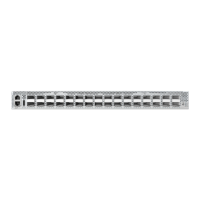– 49 –
4 MAKING NETWORK CONNECTIONS
CONNECTING NETWORK DEVICES
The switch is designed to be connected remote devices using optional
1000BASE-SX, 1000BASE-LX, 1000BASE-LH, 1000BASE-LHX, 1000BASE-ZX,
1000BASE-BX20, or 1000BASE-BX10 SFP transceivers. It may also be connected
to 10, 100, or 1000 Mbps network cards in PCs and servers, as well as to other
switches and hubs.
TWISTED-PAIR DEVICES
Each device requires an unshielded twisted-pair (UTP) cable with RJ-45
connectors at both ends. Use Category 5, 5e or 6 cable for 1000BASE-T
connections, Category 5 or better for 100BASE-TX connections, and Category 3
or better for 10BASE-T connections.
CABLING GUIDELINES
The RJ-45 ports on the switch support automatic MDI/MDI-X pinout
configuration, so you can use standard straight-through twisted-pair cables to
connect to any other network device (PCs, servers, switches, routers, or hubs).
See Appendix B for further information on cabling.
C
AUTION
:
Do not plug a phone jack connector into an RJ-45 port. This
will damage the switch. Use only twisted-pair cables with RJ-45
connectors that conform to FCC standards.

